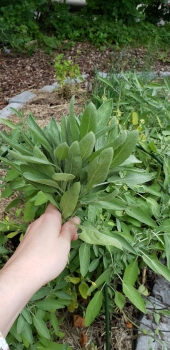
 6
6




![Filename: Brother-no-oil.jpg
Description: [url=https://support.brother.com/g/b/faqend.aspx?c=us&lang=en&prod=hf_ls590eus&faqid=faqh00000529_001]source[/url] [url=https://support.brother.com/g/b/faqend.aspx?c=us&lang=en&prod=hf_ls590eus&faqid=faqh00000529_001]source[/url]](/t/243134/a/234397/Brother-no-oil.jpg)
Aspirations: She seeks wool and flax, considers a field and buys it, girds herself with strength, opens her mouth with wisdom, and does him good all the days of her life. (pieces of Proverbs 31, NKJV)
 7
7











 7
7




I make a Maple Syrup instructional movie! Check it out HERE
SKIP books, get 'em while they're hot!!! Skills to Inherit Property
See me in a movie building a massive wood staircase:Low Tech Lab Movie
 5
5


















 5
5




r ranson wrote:Some of them have pockets of a non drying grease and oil could dilute it.
Mike Haasl wrote:I'd say that if the manufacturer says to not oil it, that means that a skilled mechanic who really understands the machinery and lubricants, could probably help it out by lubricating it.
r ranson wrote: For the bb, it's better to borrow a machine that needs oil either from a friend, tool library, or even a working museum.
Aspirations: She seeks wool and flax, considers a field and buys it, girds herself with strength, opens her mouth with wisdom, and does him good all the days of her life. (pieces of Proverbs 31, NKJV)
 8
8




Trying to achieve self-reliance on a tiny suburban plot: http://gardenofgaladriel.blogspot.com
 8
8











 2
2




r ranson wrote:Sewing machine oil is my preference over something with a sticky residue like wd40. Wd40 is good for getting old machines moving, but can lock up later if not rinsed off with a light oil like sewing machine oil. It's really hard to fix when that happens.

Trying to achieve self-reliance on a tiny suburban plot: http://gardenofgaladriel.blogspot.com
 18
18




G Freden wrote:
r ranson wrote:Sewing machine oil is my preference over something with a sticky residue like wd40. Wd40 is good for getting old machines moving, but can lock up later if not rinsed off with a light oil like sewing machine oil. It's really hard to fix when that happens.
I'll let you know if that happens
Nails are sold by the pound, that makes sense.
Soluna Garden Farm -- Flower CSA -- plants, and cut flowers at our farm.
 4
4





 7
7




G Freden wrote:My Janome sewing machine is nearly 20 years old and was starting to really drag. It made a lot of noise, it kept catching and I'd have to manually turn the wheel to get it going again: it was just slow and not fun to use.
How Permies works: https://permies.com/wiki/34193/permies-works-links-threads
My projects on Skye: The tree field, Growing and landracing, perennial polycultures, "Don't dream it - be it! "

|
This tiny ad is programmed to love you
The new permaculture playing cards kickstarter is now live!
https://www.kickstarter.com/projects/paulwheaton/garden-cards
|






